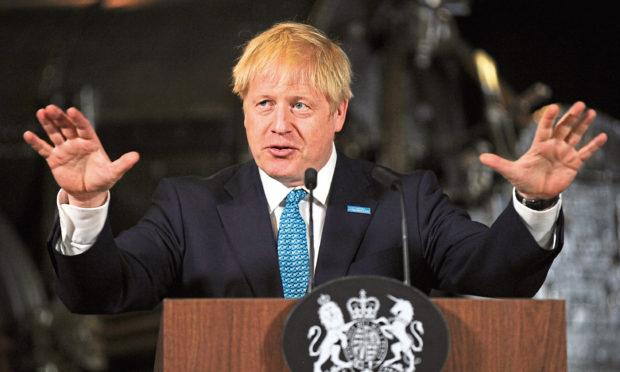The elastic of British politics is pulled and is about to snap painfully back into the nation. We could be voting before October 31 – snap enough?
Prime Minister Boris Johnson and his strategist Dominic Cummings have a narrow window in which to achieve two things – keep Boris in office and leave the EU.
The Brexit deadline is October 31. While every new PM enjoys a bounce in popularity, they want to navigate the high drama of the former with the good fortune of the latter. The prize is five years in office with a majority.
Boris sees the next two months as a challenge to be endured – like early Christians surviving self-flagellation on their journey to sainthood.
It’s important to look like Brexit matters, but more important to use that to secure office for the long term. Which is to say – Boris wants a general election.
To hold a general election, the government needs to have either lost a vote of no confidence or two-thirds of the House of Commons need to approve a motion for a national ballot.
The Fixed-term Parliaments Act 2011 removed the sitting prime minister’s right to unilaterally declare a vote.
There would then be a six-week period of campaigning before the actual election. If the Commons approved an election after the Brexit deadline, the vote would be in December or January.
Nobody wants their Christmas and Hogmanay infected by politicians, so that’s too late. What’s more, the great unknown of Brexit would be real by then, and food shortages would be fatal to Tory hopes.
As the Commons only returns in September, and given the six-week campaign, it’s more likely any election would be in October. When our MPs next gather there will be all to play for – Brexit, the government and the UK constitution are all up for grabs.
One version is that the opposition summon enough competence to hold and win a vote of no confidence in the PM. If that happens, the Tories have 14 days to recommend a new leader to the Queen.
If they are not capable, then either there is an election or a government of national unity (a coalition of opposition parties and Tory rebels) could take over. An election seems likely in that circumstance, as I can not see Labour’s Jeremy Corbyn choosing national unity over going to the country.
One possibility is that Boris Johnson simply does not go after a vote of no confidence. Spectacular egotist and moral vacuum he may be, but I don’t think even he would create such a constitutional crisis. It would embarrass the Queen, who would be obliged to intervene in some fashion, and would crash the economy.
The other idea is he prorogues parliament – he suspends it. This also seems too extreme and thus damaging to his real ambition – to stay in office. It is more in his interest to go for the election. That would mean parliament suspended while our politicians campaigned. The advantage of that to Boris is he can continue to appease the no-nonsense Brexiteers while painting Corbyn as the dangerous lefty.
Another version in this game of what-ifs is that he survives the no-confidence vote, but then calls an election anyway. He’d go to the country looking in charge. Boris would still need two-thirds of the commons to agree. Given Corbyn has repeatedly said he wants an election, and opposition parties would look silly resisting a vote, its likely this would pass.
An election has to be on a Thursday, suggesting October 24, October 31 (Brexit deadline) or November 7. As you probably do not want voters to be experiencing any post-Brexit chaos, the October dates look more likely.
The grandaddy of constitutional thought, Lord Hennessy, said this week: “Good chaps know where the lines are drawn – good chaps of both sexes, of course – and make sure that we get nowhere near crossing the line. It only takes one of the big players at a moment of high political drama to decline to play by the unwritten rules and you’re in deep trouble.”
The Boris strategy is to win over public opinion with giveaways and talking tough on Europe and crime.
The SNP would fight any election on a manifesto pledge that a majority of nat MPs is a mandate for a second referendum.
Having snuffed out the challenge from Ruth Davidson, Johnson exhibits the signs of a southerner who doesn’t rate the Scottish question.
Boris may win his extended time in office, but if it’s not Brexit, then it will be Scotland that marks his premiership as the time of “bad chaps”.










